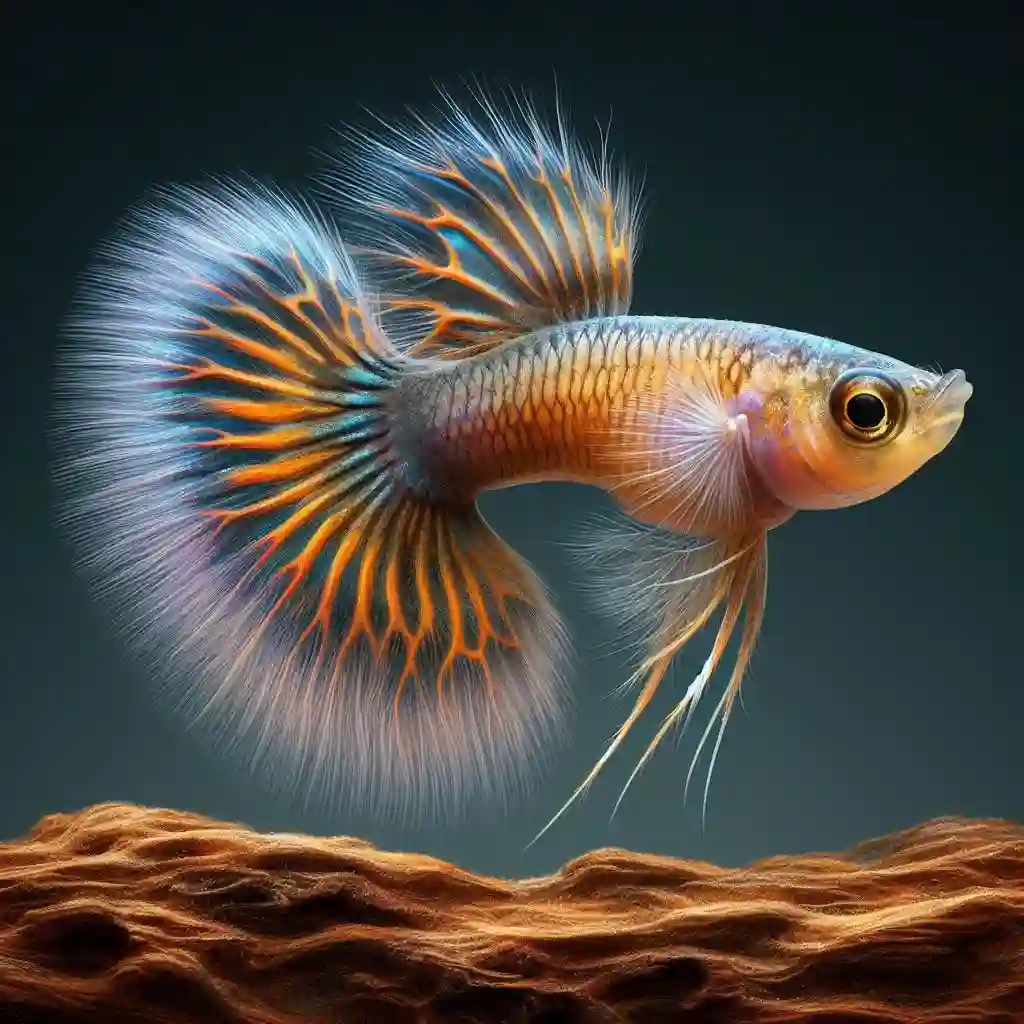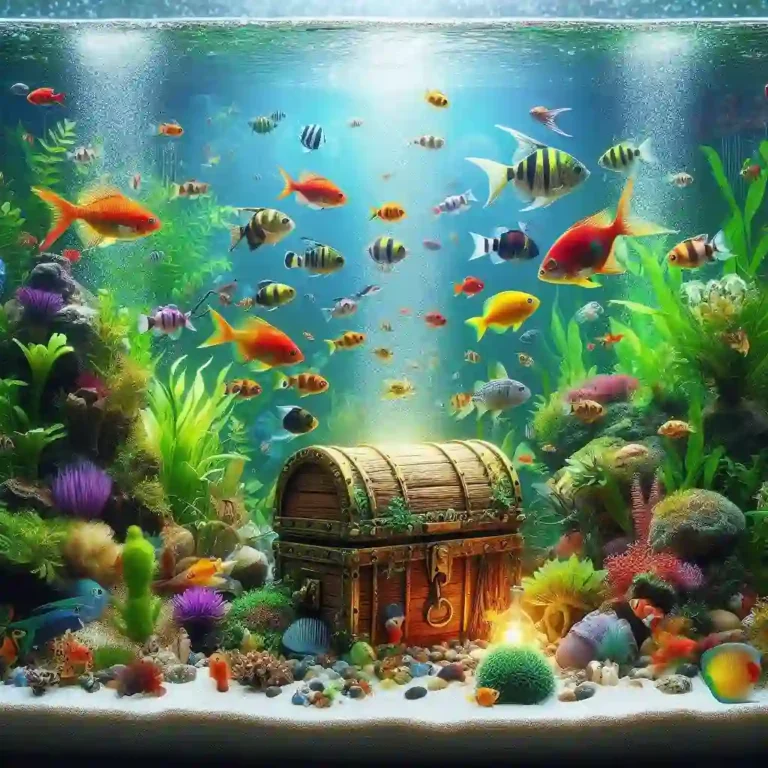Exploring Rare Guppy Fish Species: A Deep Dive into Aquatic Biodiversity
Rare Guppy Fish Species are a fascinating subject that delves into the depths of aquatic biodiversity.
In this blog post, we will take a deep dive into the world of rare guppy species, exploring their allure, habitats, genetics, breeding techniques, coloration, conservation efforts, and the future of their diversity.
Rare Guppy Fish Species: A Quick Guide
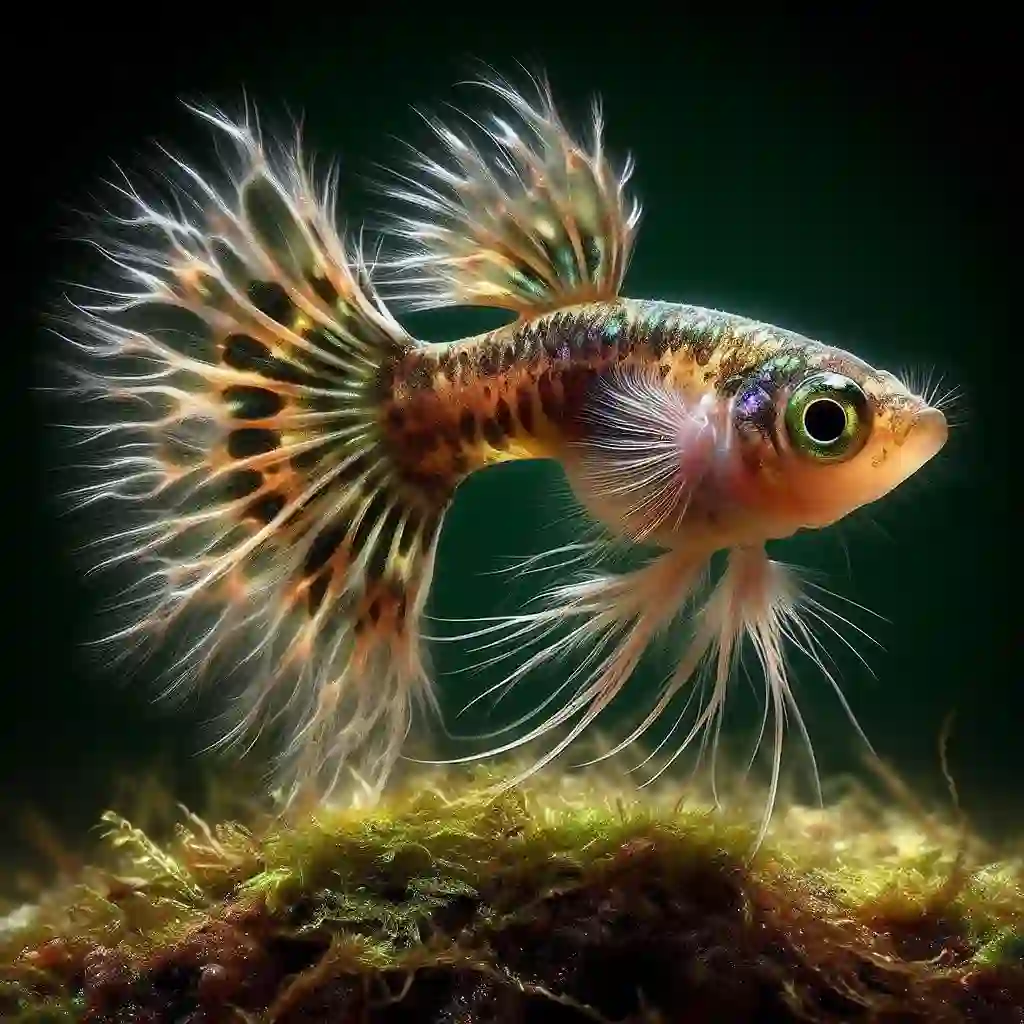
This quick guide serves as an introductory overview to some of the aspects and species you might encounter.
Identifying Rare Guppies
- Color Variations: Look for unusual color patterns, such as vibrant blues, deep blacks, or glowing oranges that are not commonly seen.
- Fin Shapes: Unique fin shapes, including larger dorsal fins or intricate tail designs, often distinguish rare species from their more common counterparts.
Popular Rare Species
- Black Moscow Guppy: Known for its luxurious, dark coloration that covers its entire body.
- Blue Grass Guppy: Distinguished by its stunning blue color mixed with grass-like fin patterns.
- Albino Full Red Guppy: Prized for its striking red coloration and lack of pigmentation in the eyes.
Habitat and Care
- Water Conditions: Mimic their natural habitat by maintaining clean, well-filtered water with specific pH and temperature ranges.
- Diet: Provide a varied diet rich in nutrients to support their health and vibrant coloration.
- Selective Breeding: Focus on specific traits to enhance the appearance and health of future generations.
- Genetic Diversity: Aim to maintain genetic diversity to ensure the resilience of the species.
20 Popular Rare Guppy Species
- Black Moscow Guppy: A striking variety with a deep, uniform black coloration that captivates onlookers.
- Blue Grass Guppy: Features a mesmerizing blue hue interlaced with grass-like fin patterns, offering a unique visual appeal.
- Albino Full Red Guppy: Noteworthy for its vibrant red color and the distinctive lack of pigmentation in its eyes.
- Endler’s Guppy (Poecilia wingei): Smaller than the common guppy, it boasts bright, neon-like color patterns.
- Half Moon Guppy: Named for its large, half-moon-shaped tail, this species showcases a variety of stunning colors.
- Dumbo Ear Guppy: Recognizable by its large, pectoral fins resembling elephant ears, paired with bold coloration.
- Rainbow Guppy: Exhibits a broad spectrum of colors, mimicking the appearance of a rainbow.
- Leopard Tailed Guppy: Features a distinctive leopard spot pattern on its tail, complemented by vibrant body colors.
- Glass Guppy: Almost completely transparent, this rare variety offers a glimpse into the internal workings of guppy anatomy.
- Dragon Tail Guppy: This variety boasts elongated, dragon-like tails with intricate patterns and vivid colors.
- Tuxedo Guppy: Characterized by a sharp color contrast between the front and back halves of the body, resembling formal attire.
- Gold Cobra Guppy: Offers a stunning, metallic gold pattern that mimics the skin of a cobra.
- Panda Guppy: Known for its black and white coloration, reminiscent of a panda bear.
- Sunset Guppy: Displays a gradient of colors that resemble a sunset, often with a mix of oranges, reds, and yellows.
- Japanese Blue Guppy: A rare breed featuring a delicate blue coloration with subtle variations.
- Peacock Guppy: Its tail and dorsal fin display a peacock feather-like pattern, rich in colors and detail.
- Galaxy Guppy: Speckled with star-like dots across its body and fins, resembling a night sky.
- Platinum Guppy: Boasts a sleek, metallic silver appearance that shines brilliantly under aquarium lights.
- Lace Guppy: Known for its lacy patterned fins, often in contrasting colors to its body.
The Allure of Guppy Fish: An Overview
Guppies, affectionately dubbed millionfish, are a vibrant highlight in the freshwater fish community, celebrated for their dazzling array of colors and dynamic behaviors. These small, vivacious creatures have earned their place as a staple in aquariums across the globe, captivating the hearts of enthusiasts with their lively antics and stunning visual appeal.
What sets rare guppy species apart is their unique and often exotic appearances, which go beyond the familiar beauty seen in commonly found varieties. Their remarkable color patterns and fin shapes draw a particular interest from hobbyists who are always on the lookout for the next extraordinary addition to their collection.
This intrinsic fascination with guppies not only stems from their aesthetic value but also from the joy of observing their sociable nature in a contained aquatic ecosystem.
As we venture further into understanding these enchanting creatures, their allure becomes an evergreen topic of interest, fostering a deeper appreciation for the nuanced tapestry of life that thrives beneath the water’s surface.
Unveiling Rare Guppy Species: A Closer Look
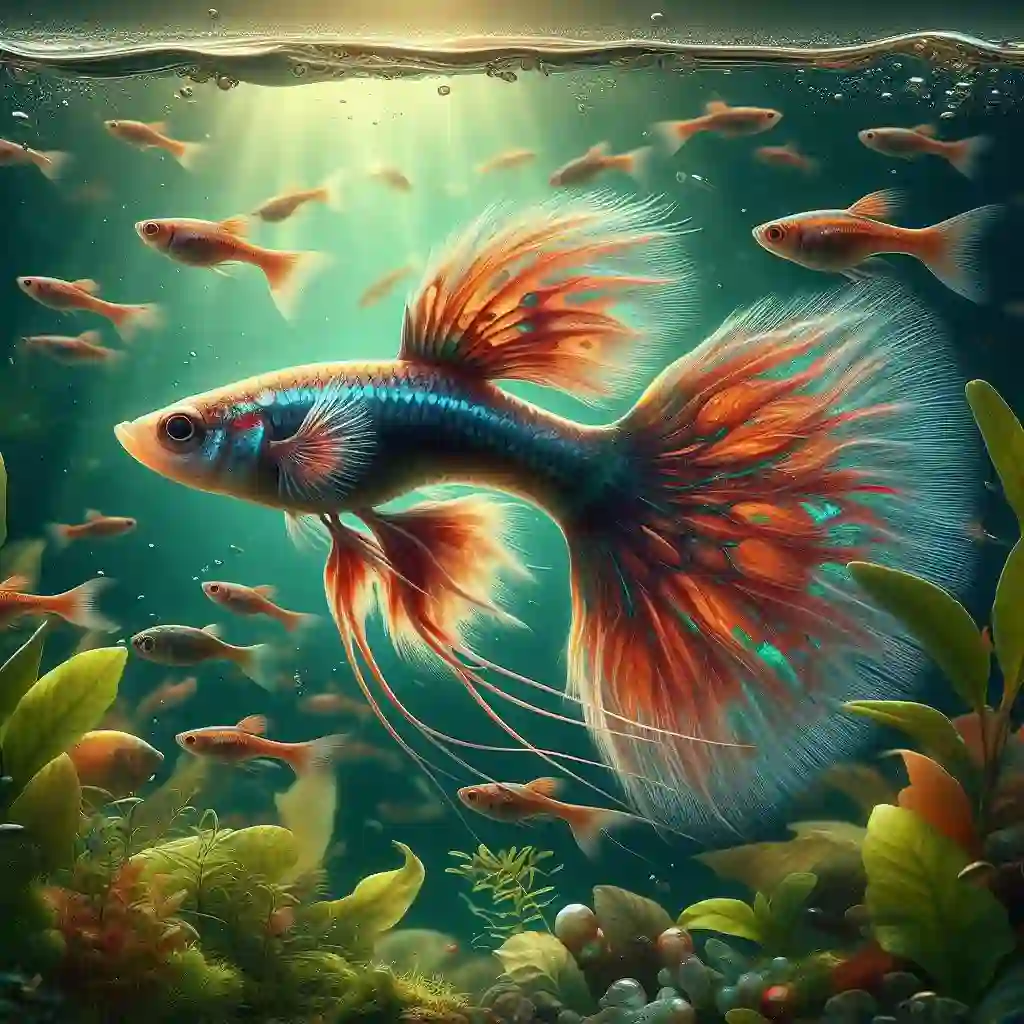
Diving into the realm of rare guppy species reveals a kaleidoscope of extraordinary variants that stand out from their more ubiquitous cousins. Among these rarities, the Black Moscow guppy dazzles with its deep, velvety hue, while the Blue Grass guppy mesmerizes with its intricate, lace-like fin patterns.
Each species brandishes its own unique spectacle of colors and forms, creating a vibrant mosaic that enriches the freshwater fish community. The journey into the discovery of these rare guppies is akin to uncovering hidden gems, where each find adds a new layer of excitement and marvel to the aquatic hobby.
Their distinctiveness not only lies in their appearance but also in the stories they tell of adaptation and survival, making the exploration of rare guppy species a continuously unfolding narrative of natural wonder.
Habitats of the Lesser-Known: Where Rare Guppies Thrive
Rare guppy species have carved out niches in a variety of unique environments, ranging from the crystal-clear, slow-moving tributaries to hidden, vegetation-rich water bodies often tucked away from the human eye.
These habitats are as exceptional as the fish themselves, providing not only the physical space but also the necessary resources for these guppies to flourish. The ecological niches they occupy are characterized by specific water parameters, such as temperature, pH, and mineral content, that are crucial for their survival and reproduction.
The micro-environments within these habitats offer a sanctuary from predators and competition, allowing rare guppies to exhibit their full range of behaviors and breeding strategies.
By understanding and replicating these conditions, conservationists and hobbyists alike can help to preserve the delicate ecosystems that these rare species call home, ensuring their continued existence in the wild.
Examining the Genetics of Rare Guppy Species
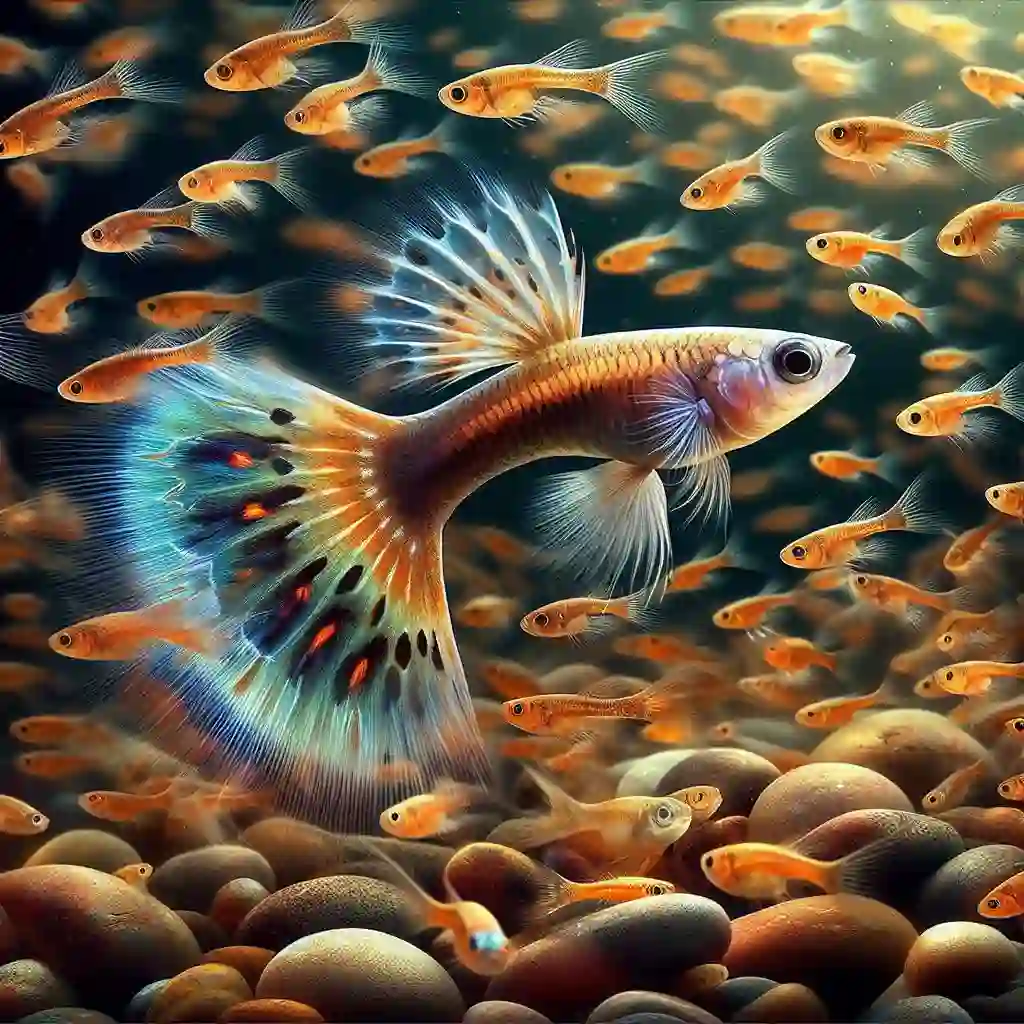
The genetic landscape of rare guppy species is a vibrant tapestry that holds the key to their remarkable diversity and stunning visual appeal. Delving into the genetic basis of these fish reveals a complex interplay of genes responsible for their unique colorations, patterns, and fin shapes.
Scientific exploration into these genetic intricacies allows breeders and researchers to understand the inheritance patterns and mutations that give rise to the distinct characteristics of rare guppies.
This knowledge not only enriches our comprehension of genetic diversity but also guides the selective breeding practices aimed at conserving and enhancing the unique traits of these captivating creatures.
As we further our genetic research, we uncover the potential to safeguard the genetic health and variability of rare guppy populations, ensuring their resilience and continuity in the face of environmental changes and breeding challenges.
Breeding Techniques for Guppy Diversity
The art and science of breeding rare guppy species intertwine, allowing aquarists to curate a palette of genetic diversity. Focused selection and strategic pairing of specimens with desired traits are foundational in this endeavor.
Advanced techniques, such as controlled environment breeding and genetic lineage tracking, play pivotal roles. These practices enable the cultivation of new variants, each displaying unique and desirable characteristics.
Through meticulous breeding efforts, aquarists not only contribute to the preservation of rare guppy species but also to the ongoing expansion of the visual and genetic tapestry these fish represent.
Guppy Genetics: Unlocking the Mysteries of Rare Traits
The exploration of guppy genetics opens up a world where science meets the splendor of nature, delving into the essence of what makes rare guppy species so visually striking and genetically distinct. Through the study of genetic markers, researchers have begun to map out the blueprint of these fishes’ vibrant patterns and unique fin shapes.
This journey into the genetic underpinnings allows for a better understanding of the evolutionary processes that have led to such diversity. By identifying specific genes responsible for these extraordinary traits, scientists are paving the way for targeted conservation strategies and informed breeding practices.
This endeavor not only enhances our grasp of guppy biodiversity but also illuminates the broader implications of genetic diversity and adaptation in the animal kingdom. Through genetic research, the mysteries of rare guppy traits are slowly being unraveled, offering insights into the dynamic interplay between genetics and the environment.
The Wonders of Guppy Fish Coloration
The color palette of rare guppy species is nothing short of a natural art exhibit, with each fish presenting a unique blend of hues and patterns. This vivid spectacle is the result of complex genetic factors and environmental interactions, painting each guppy with its own distinctive array of colors.
The brilliance and variety of their coloration serve not just as an aesthetic delight but also play a crucial role in their social interactions and survival strategies. From the iridescent shimmer of a metallic blue to the fiery glow of a sunset orange, these guppies carry the essence of the rainbow within their scales.
Their remarkable ability to display such a broad spectrum of colors highlights the incredible adaptability and evolutionary success of these small yet fascinating creatures.
Observing these colors in motion, as guppies glide through their aquatic realms, provides a mesmerizing experience that underscores the marvels of evolutionary biology and the sheer beauty inherent in the natural world.
Conservation Efforts for Guppy Biodiversity
In the face of environmental pressures, including habitat degradation, pollution, and the impacts of climate change, the plight of rare guppy species underscores the urgent need for dedicated conservation strategies. Protecting these unique varieties involves habitat restoration projects and the establishment of protected areas where their natural environments are preserved.
Engaging local communities in conservation activities and raising awareness about the importance of aquatic biodiversity are key components in the battle to save these iridescent gems. Research into sustainable breeding and re-introduction programs also holds promise for bolstering guppy populations in their native habitats.
Collaborative efforts among aquarists, scientists, and conservationists are vital in crafting a multifaceted approach to ensure the resilience and sustainability of guppy biodiversity in the wild.
Starting Your Own Rare Guppy Collection: Tips and Considerations
Embarking on the journey of curating a collection of rare guppy species requires thoughtful preparation and dedication. Key to this process is ensuring that each species’ specific habitat and dietary needs are met, simulating their natural environments as closely as possible within your aquarium.
It’s essential to invest in quality filtration systems and regularly monitor water conditions, such as temperature, pH levels, and hardness, to maintain the optimal environment for your rare guppies.
Equally important is the acquisition of guppies from reputable breeders or suppliers, which helps in safeguarding the genetic purity and health of your collection.
Careful attention to these details not only supports the well-being of your rare guppies but also enhances their vibrant colors and behaviors, making your aquarium a living tapestry of aquatic diversity.
The Future of Guppy Fish Diversity: What Lies Ahead
The horizon for guppy fish diversity is teeming with potential discoveries and advancements. As conservation and breeding efforts evolve, we stand on the cusp of deepening our understanding of these vibrant creatures.
The commitment to research and protective measures promises not only to unveil new varieties but also to enhance the genetic resilience of existing populations.
The collaboration between aquarists, biologists, and environmentalists is key to navigating the challenges ahead, ensuring the preservation and celebration of guppy diversity.
Through shared knowledge and enthusiasm, the legacy of these mesmerizing fish is poised to flourish, offering endless fascination for generations of enthusiasts.
FAQs
What makes a guppy fish species considered rare?
Rare guppy species are distinguished by their unique colorations, fin shapes, and patterns that are not commonly found in the general guppy population. Their rarity can also stem from their limited geographic distribution or specific habitat requirements.
How can I start my own rare guppy collection?
Begin by researching to understand each species’ specific needs. Invest in a quality aquarium setup that mimics their natural habitat, and source your guppies from reputable breeders to ensure genetic diversity and health.
Are rare guppies harder to care for than common varieties?
While some rare guppies may require specific care related to their habitat or dietary needs, most guppies share similar care requirements. The key is maintaining clean water conditions and a stable environment.
Can I breed rare guppy species at home?
Yes, with proper knowledge and preparation. Understanding the genetic traits and preferred conditions for breeding can help you successfully breed rare guppies.
How can I contribute to the conservation of rare guppy species?
Support conservation efforts by participating in habitat restoration projects, spreading awareness about the importance of biodiversity, and practicing responsible breeding and keeping of guppies.

Hello, I’m Aria Cooper, the heart and soul behind Swimmy Buddies. As a devoted fish aficionado, I share my aquatic adventures and expertise to inspire your own underwater explorations. 🐠🌊

